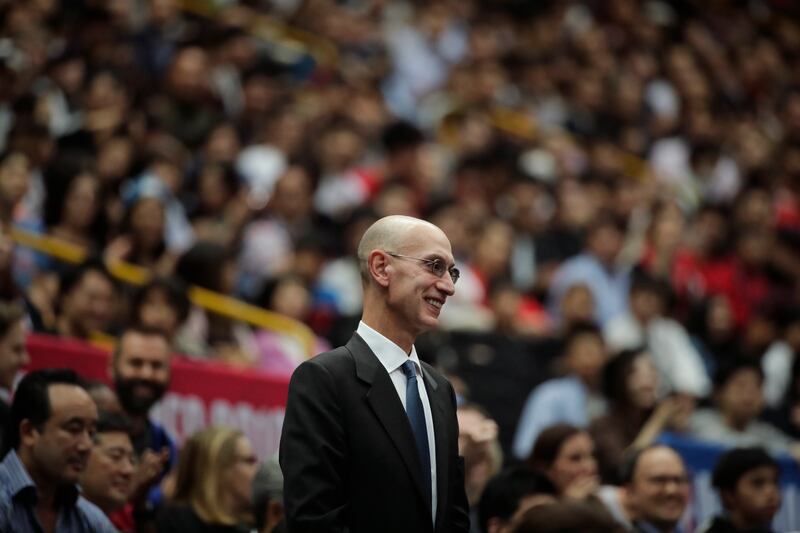Representatives from the National Basketball Players Association voted Thursday night to approve a 72-game schedule for the 2020-21 season that will begin Dec. 22.
“Additional details remain to be negotiated and the NBPA is confident that the parties will reach agreement on these remaining issues relevant to the upcoming season,” the players union said in a statement released late Thursday night.
A large chunk of what remains to be negotiated are the financial amendments that will be made to the league’s collective bargaining agreement. Those discussions, according to ESPN’s Adrian Wojnarowski, are expected to last into next week.
Most notably the players and the league must decide what percentage of player salaries will be kept in escrow for the 2020-21 season and beyond.
For many, this could be the first time that you’re hearing about the NBA’s player escrow system. Here’s a brief description of how it works:
Each year the NBA salary cap is based on projected basketball related income (BRI) for the upcoming season. Teams and players share the BRI on a nearly 50/50 split as defined in the current CBA.
During the course of the season, players put 10% of their salary into an escrow account. At the end of the season, when BRI is calculated for the year, if player salaries are less than their guaranteed split of BRI, the league returns the necessary escrow funds to the players.
If player salaries exceed their share of BRI, necessary funds from the escrow account are returned to the owners.
The escrow system is in place to try to ensure that both sides receive their fair share. The pandemic has created a new set of problems. Not only were there significant revenue losses for the 2019-20 season, but the possibility of starting a season without fans in arenas could cause major revenue drops for the 2020-21 season and beyond.
In an attempt to make up for losses in revenue, the league and NBPA are negotiating how much of player salaries to keep in escrow. Early reports suggest that the proposal from the league is for 18% of player salary to be kept in escrow.
In addition to deciding how much money to hold from player salaries, the league and player union need to decide how to spread out losses over the next couple of years so that there aren’t dramatic dips in the salary cap and so that players don’t take wild financial hits in just one year.
This could mean that the salary cap, which was at $109 million for the 2019-20 season, could stay the same for the 2020-21 season and the 2021-22 season.
These financial decisions are the reason the NBPA’s statement said that the league “tentatively approved” the league’s proposal.
So who are the winners and losers here?
There isn’t really a winner or a loser. It could be argued that owners, especially those that own their respective arenas, have been hit with greater losses over the course of the coronavirus pandemic. It could also be argued that players who aren’t making star-level money are feeling the financial hits on a more tangible level than others.
But, if both sides are able to reach agreements in a relatively short time, there will be losses on both sides but they would also avoid blowing up the current CBA, a scenario that could lead to a lockout, which would mean even more losses for players and owners.
As far as the schedule is concerned, things aren’t as equal.
Everyone benefits by the money saved from an earlier start and the players could get back to a somewhat normal schedule by the 2021-22 season by starting in December. But there are going to be players and teams that benefit more than others with such a quick turnaround.
The Los Angeles Lakers and Miami Heat just finished up the Finals in mid-October and will be looking at starting training camp in a matter of weeks rather than the normal break from June to September.
Meanwhile teams who weren’t invited to the NBA’s Orlando bubble have been resting, recuperating and waiting in the wings for months.
Once the NBA offseason kicks off in earnest, with the trade window and free agency open, teams who decide to make significant moves could be looking at an even further disadvantage, with less time to incorporate new pieces and create chemistry. Even more so, free agents that are signed later in the offseason will have a harder time adjusting with training camp expected to begin Dec. 1.
Teams that largely stay the same, like the Utah Jazz are expected to do, won’t be as impacted by the condensed offseason.
Though the NBA and NBPA have agreed in principle to the proposed 2020-21 schedule, there are still myriad details to be ironed out and in the coming weeks, including health and safety protocols, and there’s sure to be a lot about the NBA that changes.


